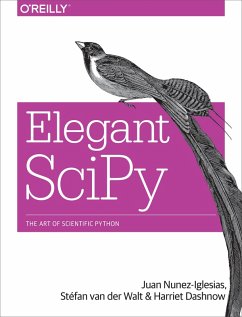Welcome to Scientific Python and its community. If youre a scientist who programs with Python, this practical guide not only teaches you the fundamental parts of SciPy and libraries related to it, but also gives you a taste for beautiful, easy-to-read code that you can use in practice. Youll learn how to write elegant code thats clear, concise, and efficient at executing the task at hand.Throughout the book, youll work with examples from the wider scientific Python ecosystem, using code that illustrates principles outlined in the book. Using actual scientific data, youll work on real-world problems with SciPy, NumPy, Pandas, scikit-image, and other Python libraries.Explore the NumPy array, the data structure that underlies numerical scientific computationUse quantile normalization to ensure that measurements fit a specific distributionRepresent separate regions in an image with a Region Adjacency GraphConvert temporal or spatial data into frequency domain data with the Fast Fourier TransformSolve sparse matrix problems, including image segmentations, with SciPys sparse modulePerform linear algebra by using SciPy packagesExplore image alignment (registration) with SciPys optimize moduleProcess large datasets with Python data streaming primitives and the Toolz library
Dieser Download kann aus rechtlichen Gründen nur mit Rechnungsadresse in A, B, BG, CY, CZ, D, DK, EW, E, FIN, F, GR, HR, H, IRL, I, LT, L, LR, M, NL, PL, P, R, S, SLO, SK ausgeliefert werden.

